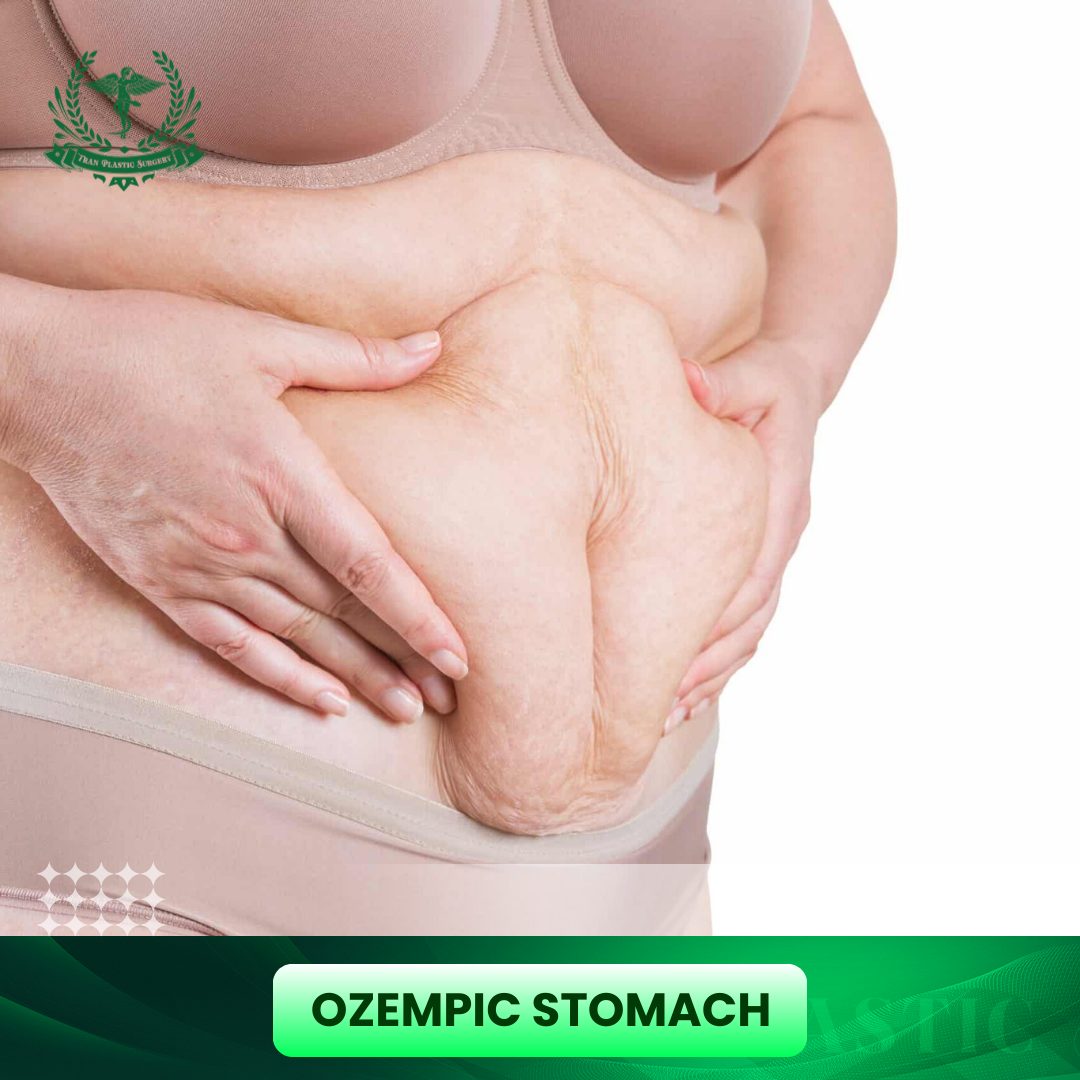Breast augmentation recovery is one of the most important phases after surgery, and understanding what to expect can make the healing process much smoother. Whether you are preparing for implants or a fat-transfer procedure, knowing the breast augmentation recovery timeline helps you plan for time off work, daily activities, and exercise.
Most patients want to know: How long does it take to heal? When can I go back to the gym? Will I be able to drive after a week? This guide breaks down every stage of breast augmentation recovery, from the first 72 hours after surgery to the full 6–8 week healing journey. You’ll also learn what you can and cannot do, red-flag symptoms to watch for, and Tran Plastic Surgery expert tips to optimize your results.
Table of Contents
ToggleHow Long Does Breast Augmentation Recovery Take?
The length of breast augmentation recovery varies from patient to patient, but most women can expect a complete healing period of 6 to 8 weeks. Some may feel well enough to return to light activities after just one week, while others require more time before resuming normal routines.
Several factors influence your personal breast augmentation recovery timeline:
- Implant placement (submuscular vs. subglandular)
- Type of surgery (silicone implants, saline implants, or fat transfer)
- Individual healing response (age, overall health, smoking habits)
- Post-operative care (wearing a supportive bra, following activity restrictions)
In general, the first week of breast augmentation recovery is the most uncomfortable, marked by swelling, tightness, and soreness. By weeks 3–4, most patients notice significant improvement. Around 6–8 weeks, you’ll likely be cleared to resume full exercise, lifting, and daily activities.
Key Takeaway: While every patient heals differently, the average breast augmentation recovery time is 6–8 weeks, with steady progress along the way. Following your surgeon’s instructions is the best way to ensure safe and smooth healing.
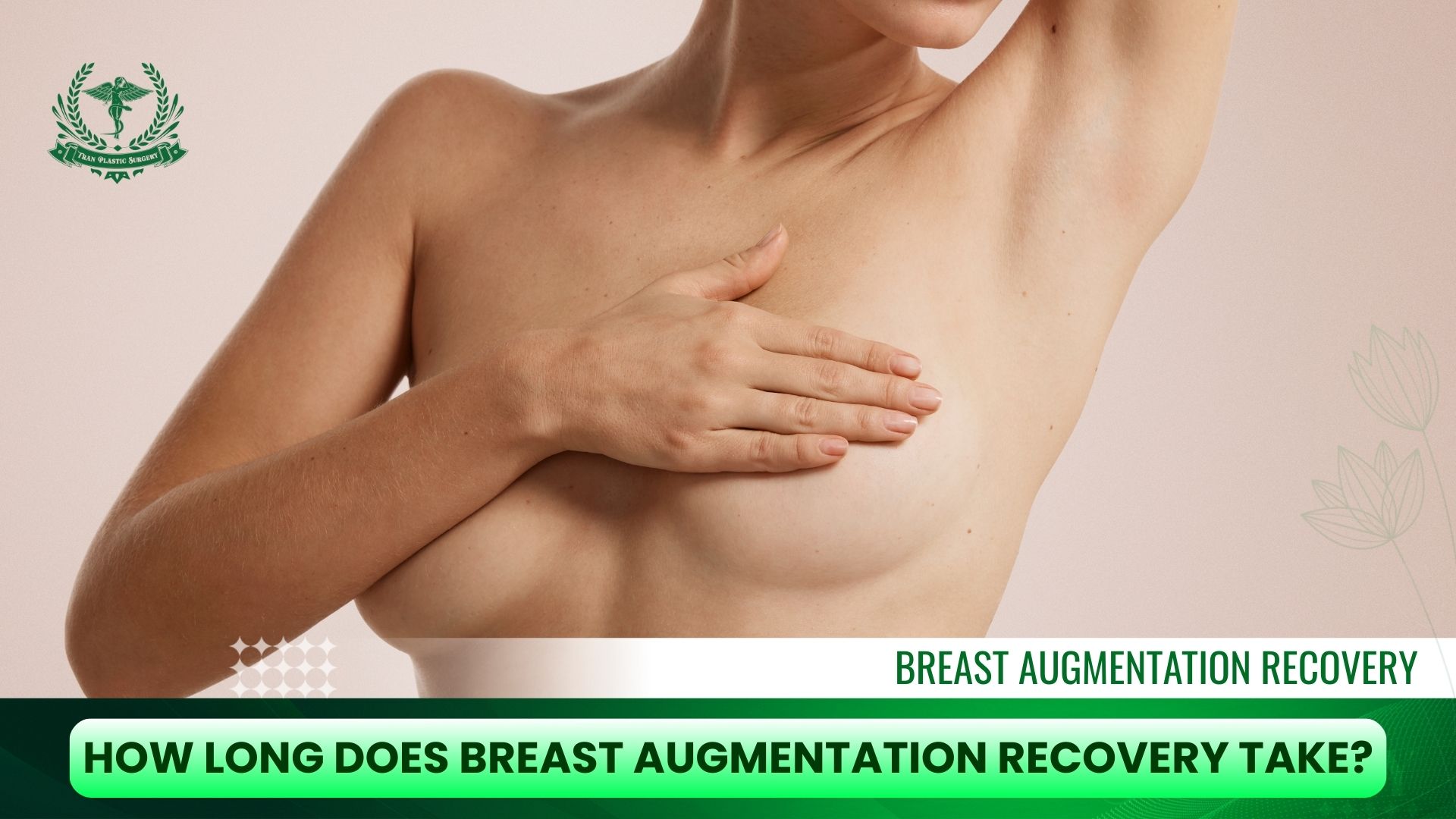
Ready to achieve the look you’ve always wanted? Learn more about our personalized Breast Augmentation services at Tran Plastic Surgery and take the first step toward your confidence.
Breast Augmentation Recovery Timeline (Week by Week)
1. Days 1–3 of Breast Augmentation Recovery
The first 72 hours are often the most challenging stage of the breast augmentation recovery timeline. Patients typically experience swelling, bruising, tightness across the chest, and moderate discomfort. Your surgeon will prescribe pain medication and may recommend cold compresses to ease swelling.
- Rest as much as possible, but light walking around the house is encouraged to promote circulation.
- Sleep on your back with pillows propping you up to reduce swelling.
- Avoid lifting your arms above shoulder level.
- Driving is not advised during this period.
During these early days of breast augmentation recovery, it’s crucial to follow your surgeon’s instructions closely and rely on support from friends or family for daily tasks.
2. Week 1–2 of Breast Augmentation Recovery
By the end of the first week, many patients feel ready to return to light daily activities. If you have a desk job, you may go back to work after 7–10 days, but avoid heavy lifting or strenuous movement. Driving is usually permitted after at least one week, provided you are no longer taking narcotic pain medication and can move your arms comfortably.
- Continue wearing your post-op or surgical bra 24/7 as directed.
- Light household activities are fine, but avoid gym workouts.
- Swelling and bruising should begin to improve significantly.
This stage of the breast augmentation recovery timeline marks the transition from rest to gentle activity, but caution is still necessary.
3. Week 3–4 of Breast Augmentation Recovery
During weeks 3 and 4, patients usually notice major improvements in comfort and mobility. Pain is minimal, and most swelling continues to subside. At this stage, you may start incorporating more physical activity, such as walking longer distances or doing light cardio, but avoid upper-body workouts and heavy lifting.
- Many patients return fully to office work or school.
- Soreness around the chest and tightness may persist but should be tolerable.
- Implants will start to “settle” into position, a process known as drop and fluff.
This is often the most encouraging part of the breast augmentation recovery timeline, as you can gradually reclaim your routine while still protecting your healing breasts.
4. Week 6–8 of Breast Augmentation Recovery
By weeks 6 to 8, most patients are cleared for all normal activities, including intense workouts and lifting. Swelling should be minimal, and your breasts will begin to look and feel more natural. This milestone typically represents the final stage of the breast augmentation recovery timeline, although subtle internal healing continues for several months.
- Resume gym training, including upper-body exercises, if approved by your surgeon.
- Scars will begin to fade with proper scar care.
- Most patients feel confident returning to social events, travel, and intimate activities without restrictions.
At this point, breast augmentation recovery is largely complete, though your surgeon may schedule follow-up visits to monitor long-term healing.

Schedule a consultation with Dr. Tuan Tran now by calling Hotline (714) 839-8000 or E-mail consulttranplastic@gmail.com
What You Can and Cannot Do During Breast Augmentation Recovery
Knowing what activities are safe and which ones you should avoid is essential for a smooth breast augmentation recovery. Following these guidelines will help protect your implants, minimize complications, and keep your healing on track.
1. Wearing Bras During Breast Augmentation Recovery
During the early stages of your breast augmentation recovery timeline, your surgeon will recommend wearing a post-op or surgical bra 24/7. This type of bra provides proper support, reduces swelling, and helps your implants settle in the right position.
- Avoid underwire bras for at least 6–8 weeks, as they can irritate healing incisions.
- Switch to a supportive sports bra only when your surgeon gives the green light.
- Some surgeons advise wearing compression garments or surgical bras for up to 3 months.
2. Exercise and Physical Activity Restrictions
One of the most common questions about the breast augmentation recovery timeline is: When can I exercise again?
- First 2 weeks: Only light walking is recommended. Avoid lifting, running, or any high-impact activity.
- Weeks 3–4: Gradually reintroduce low-impact cardio, but no chest or upper-body exercises.
- Weeks 6–8: Most patients can safely return to the gym, including strength training, once cleared by their surgeon.
Remember, pushing yourself too soon can slow down healing and increase the risk of complications such as implant shifting or delayed wound healing.
3. Sleeping Positions During Breast Augmentation Recovery
Proper sleeping positions play a big role in comfort and healing:
- First few weeks: Sleep on your back, slightly elevated, to reduce swelling and pressure on the breasts.
- After 6 weeks: Many patients can safely return to side-sleeping if comfortable.
- Avoid stomach sleeping until your surgeon confirms it is safe, usually several months into recovery.
4. Showering and Bathing
Bathing rules during breast augmentation recovery depend on your surgeon’s instructions, but general guidelines include:
- Showering is usually permitted 48–72 hours after surgery.
- Keep incisions clean and dry; pat gently with a towel.
- Avoid soaking in bathtubs, hot tubs, or swimming pools until incisions are fully healed — typically 4–6 weeks.
5. Lifestyle Restrictions and Daily Activities
- Driving: Do not drive for at least 1 week, and only resume once you are off narcotic medications and can safely operate a car.
- Work: Desk jobs may resume after 1–2 weeks; physically demanding jobs may require 4–6 weeks.
- Household chores: Avoid lifting heavy objects, bending excessively, or doing strenuous cleaning in the first few weeks.
At Tran Plastic Surgery, we guide every patient through each stage of their breast augmentation recovery with personalized aftercare and professional follow-ups. If you are considering enhancing your confidence with breast implants, our board-certified surgeon is here to ensure a safe procedure and a smooth recovery journey.
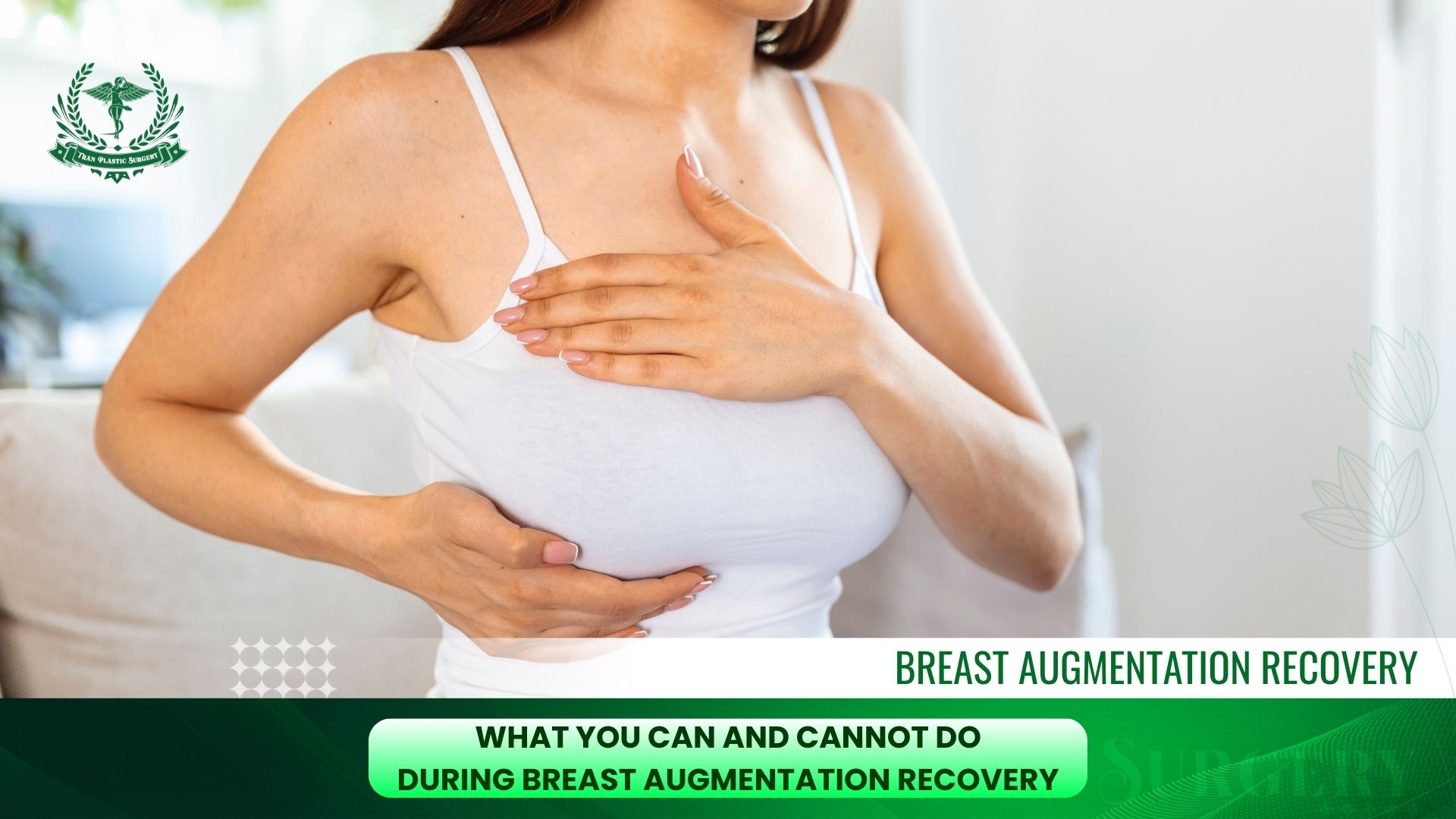
Schedule your breast augmentation consultation with Tran Plastic Surgery today and take the first step toward your transformation. 👉 CONTACT US
Special Considerations in Breast Augmentation Recovery
While most patients follow a similar breast augmentation recovery timeline, your personal experience may differ depending on the type of surgery and implant placement. Understanding these variations can help set realistic expectations.
1. Submuscular vs. Subglandular Breast Augmentation Recovery
The position of your implants plays a significant role in your healing process:
- Submuscular (under the chest muscle): Patients often experience more discomfort in the first 1–2 weeks due to muscle stretching. However, many surgeons prefer this placement for its natural look and reduced risk of capsular contracture. The breast augmentation recovery timeline for submuscular implants may feel slightly longer, especially regarding soreness and tightness.
- Subglandular (above the chest muscle): Recovery tends to be less painful and quicker since the muscle is not involved. Patients may return to daily activities sooner, although long-term aesthetic outcomes can vary.
Both options typically lead to full recovery by 6–8 weeks, but early healing sensations differ.
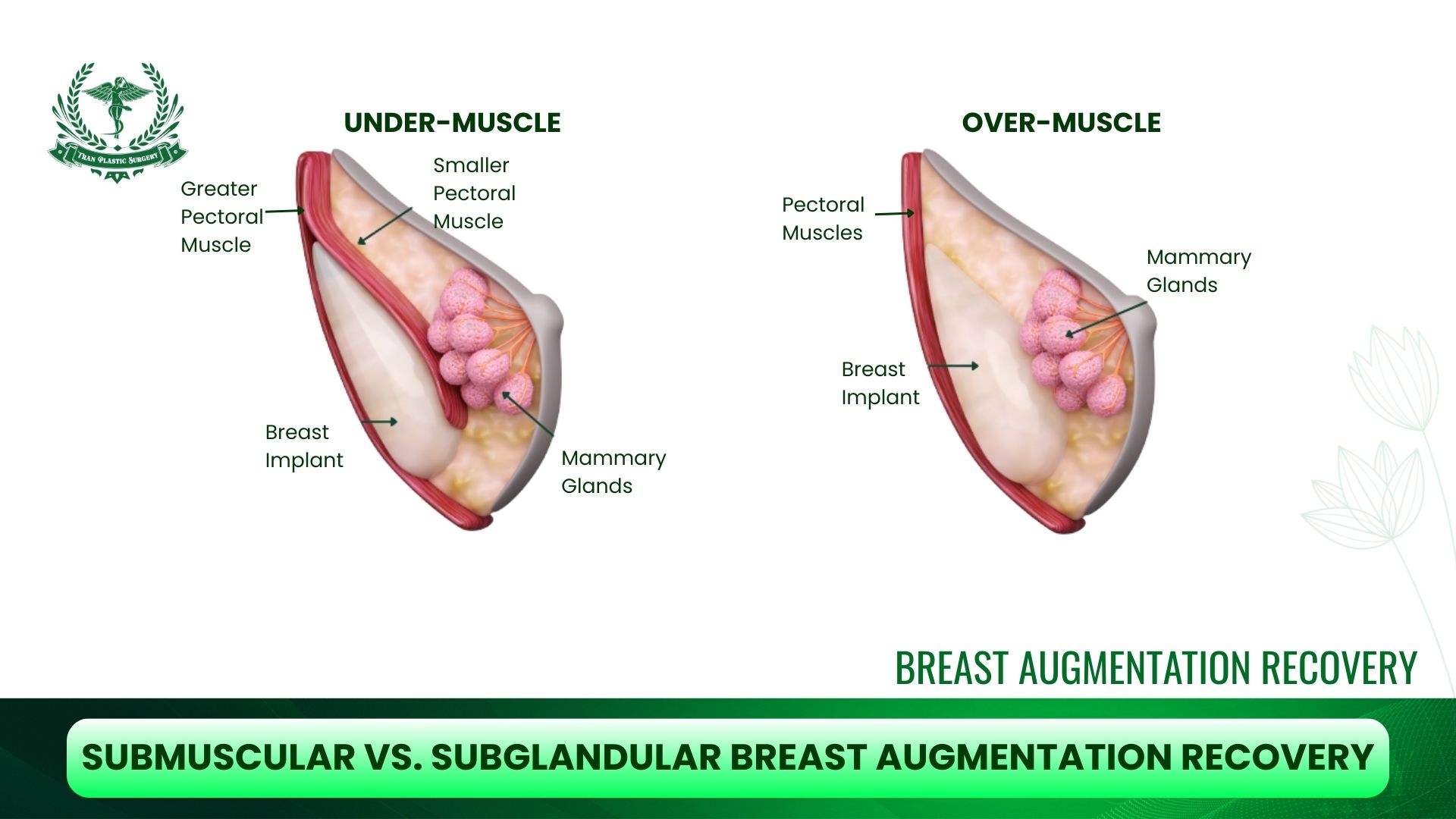
2. Fat-Transfer Breast Augmentation Recovery
Fat-transfer augmentation is another option that comes with its own recovery considerations. Instead of implants, fat is harvested from areas like the abdomen or thighs and injected into the breasts.
- Dual healing zones: You will recover not only at the breast site but also where fat was removed.
- Bruising and swelling: These are common in both areas and may last 2–3 weeks.
- Longer swelling phase: While most swelling improves within weeks, some patients notice subtle changes for several months.
The fat-transfer breast augmentation recovery timeline is slightly different, but most patients still achieve full healing and natural-looking results within 6–8 weeks.

Every woman’s breast augmentation recovery is unique. At Tran Plastic Surgery, we take the time to explain your options, prepare you for each stage of healing, and support you with compassionate aftercare. Ready to explore your breast enhancement journey? Contact Tran Plastic Surgery to schedule a private consultation and discover the approach that fits your body and lifestyle best.
Signs of Complications During Breast Augmentation Recovery
Although most patients heal smoothly, it’s important to know the warning signs that may indicate a complication during your breast augmentation recovery timeline. Early recognition and quick communication with your surgeon can prevent more serious problems.
1. Common Red-Flag Symptoms
Be alert for the following issues:
- Severe or worsening pain that does not improve with prescribed medication.
- Sudden swelling or asymmetry between the breasts.
- Redness, warmth, or pus-like discharge around the incision site.
- Fever or chills, which may signal infection.
- Shortness of breath or chest pain, which requires immediate medical attention.
2. When to Call Your Surgeon
If you notice any of the above symptoms, contact your plastic surgeon right away. While minor swelling and bruising are normal parts of the breast augmentation recovery process, persistent or worsening symptoms should never be ignored.
Most complications are rare, but catching them early ensures the best possible outcome and protects your long-term results.
Related post: Guide to a Smooth Breast Reconstruction Recovery
Long-Term Breast Augmentation Recovery and Scar Care
The journey doesn’t end once you return to work or the gym. Long-term healing is an important part of the breast augmentation recovery timeline, ensuring your results continue to improve for months and years after surgery.
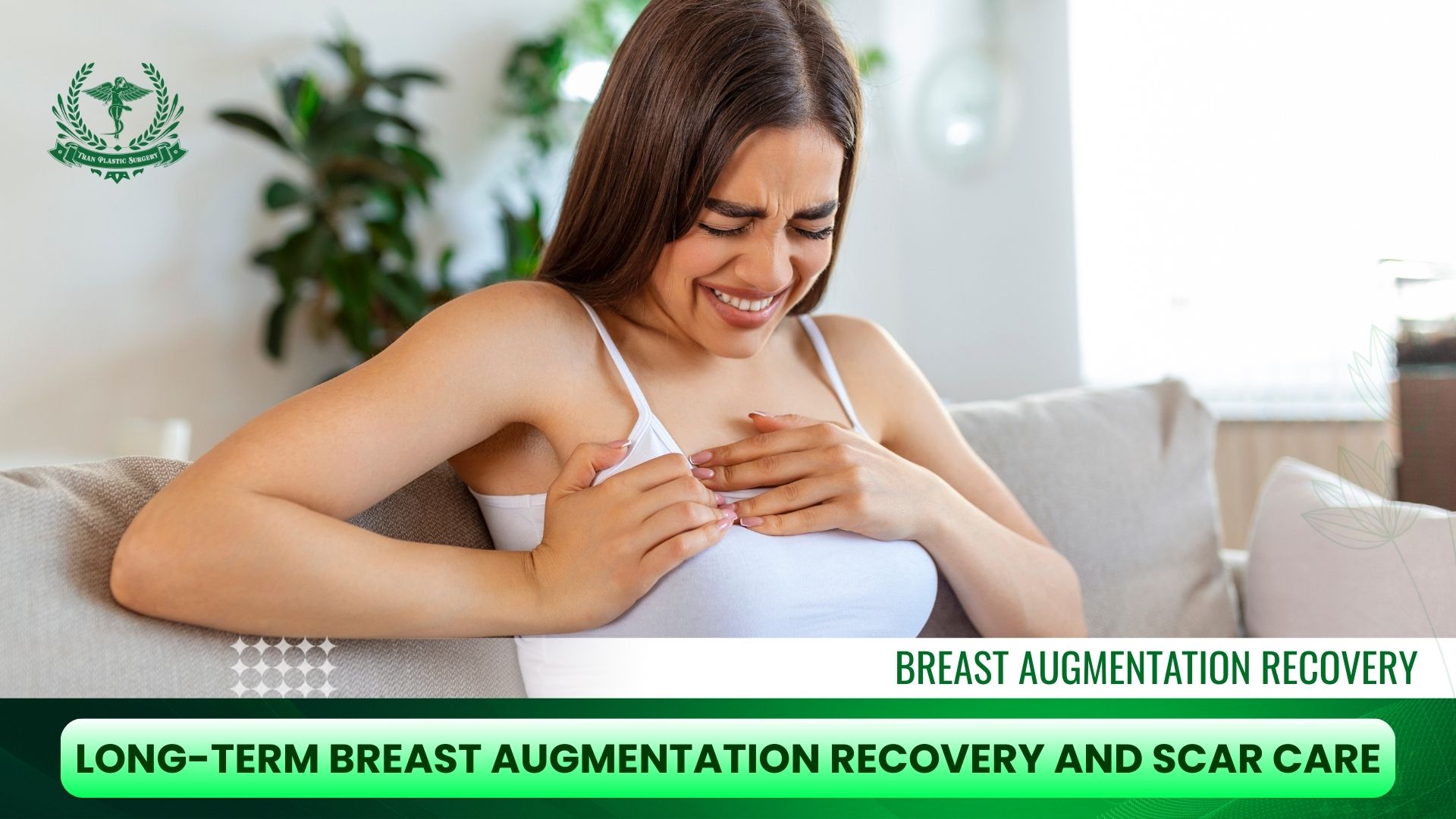
1. Scar Care After Breast Augmentation Recovery
Surgical incisions will naturally leave scars, but with proper care, they can fade significantly over time.
- Silicone sheets or gels: Many surgeons recommend using these products to minimize scar thickness.
- Sun protection: Always apply sunscreen over healing scars, as UV rays can darken them permanently.
- Gentle massage: Once cleared by your surgeon, light scar massage may improve softness and appearance.
Consistent care in the months following surgery can make scars less noticeable and improve skin quality.
2. Implant Settling and “Drop and Fluff”
Even after the 6–8 week healing window, your breasts will continue to change. Implants often sit high on the chest immediately after surgery and gradually settle into a more natural position over the next few months. This stage of the breast augmentation recovery timeline is often called the “drop and fluff” phase.
- 3–6 months: Implants soften and shift into place.
- 12 months: Final results are usually visible, with scars maturing and breasts looking natural.
3. Follow-Up Appointments and Long-Term Care
Regular follow-up visits are an essential part of safe breast augmentation recovery. Your surgeon will monitor healing, check implant positioning, and answer any questions. Long-term maintenance may include:
- Annual check-ups with your plastic surgeon.
- MRI or ultrasound to evaluate implant integrity (especially with silicone implants).
- Discussing revision surgery in the future if desired.
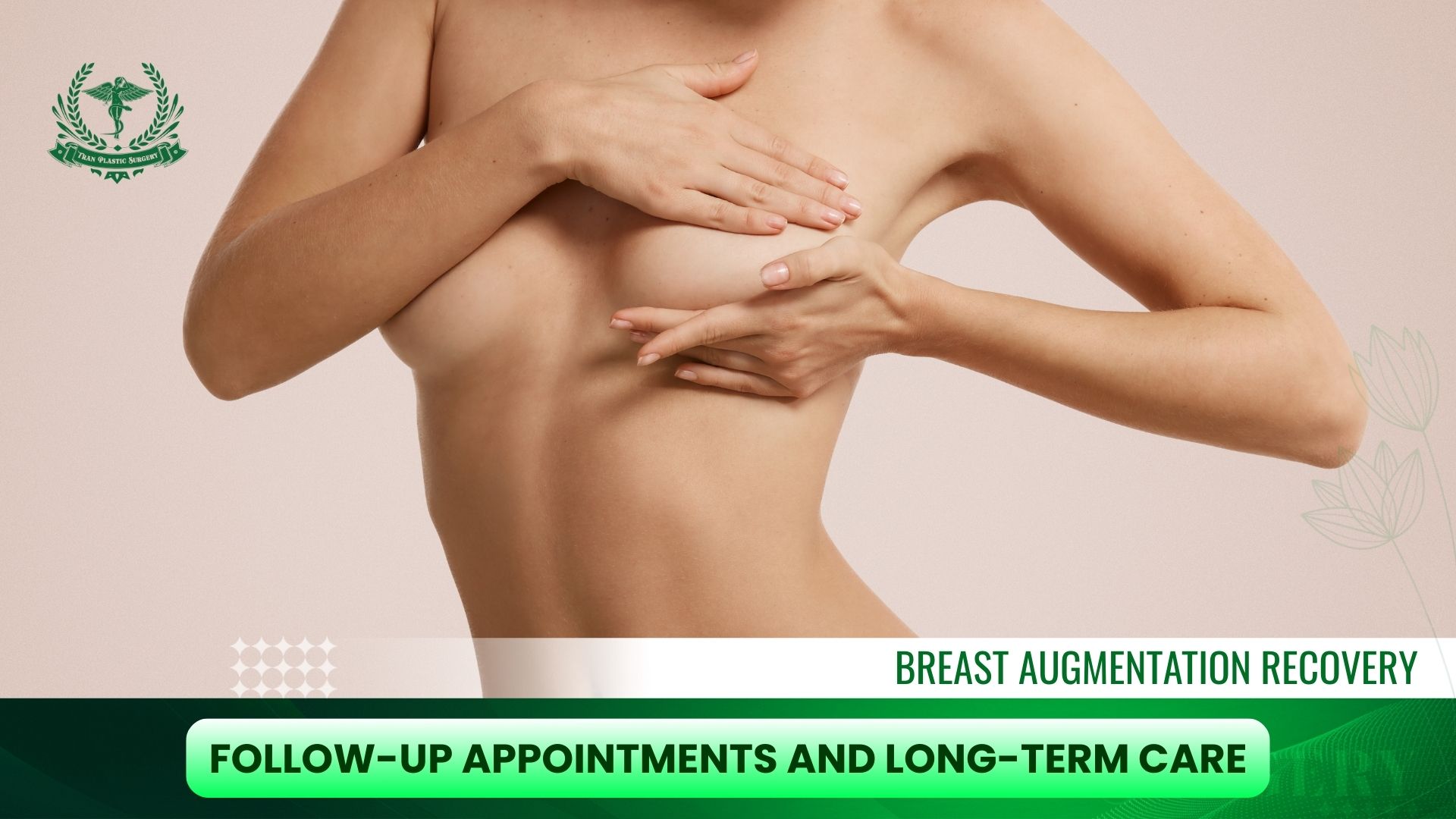
Remember, long-term breast augmentation recovery is just as important as the early healing stages. By committing to scar care, attending follow-up appointments, and protecting your results, you’ll enjoy lasting improvements in both appearance and confidence.
Where should you have reputable Breast Augmentation surgery?
When choosing where to have your breast augmentation, it’s important to find a trusted practice that combines surgical expertise with personalized care. At Tran Plastic Surgery, our board-certified team is dedicated to ensuring not only beautiful, natural-looking results but also a smooth and safe recovery journey. With comprehensive support before, during, and after surgery, we guide you through every step of the healing process so you can feel confident and well-cared for from start to finish.
FAQs About Breast Augmentation Recovery
1. How long is breast augmentation recovery?
Most patients complete their breast augmentation recovery timeline within 6–8 weeks. While you may return to light activities after 1–2 weeks, full exercise and heavy lifting are usually safe after surgeon approval at around 6 weeks.
2. When can I go back to work after breast augmentation?
If you have a desk job, you may return within 7–10 days. Jobs requiring physical labor may need 4–6 weeks of healing before resuming duties. Always confirm with your surgeon before going back to work.
3. When can I drive during breast augmentation recovery?
Driving is typically safe after the first week of breast augmentation recovery, once you are off pain medications and can move your arms without discomfort.
4. When can I exercise after breast augmentation?
Walking is encouraged immediately to support circulation. Light cardio may begin after 2–3 weeks, but avoid chest or weight training until 6 weeks, when most patients are cleared for full activity.
5. Do I need to wear a sports bra after breast augmentation?
Yes. A supportive post-op or sports bra is essential during the breast augmentation recovery timeline. Many surgeons recommend wearing one 24/7 for at least 6–8 weeks to help implants settle and reduce swelling.
6. How long does swelling last after breast augmentation?
Mild swelling is expected for the first 2–3 weeks, with noticeable improvement by the end of the first month. For some patients, minor swelling may persist for a few months as the body fully heals.
7. Can I sleep on my side after breast augmentation recovery?
During the first few weeks of the breast augmentation recovery timeline, you should sleep on your back with your upper body elevated to minimize swelling. Most patients can return to side sleeping after 6 weeks, once cleared by their surgeon.
8. What should I avoid during breast augmentation recovery?
Avoid heavy lifting, strenuous exercise, smoking, and alcohol in the early weeks of recovery. You should also avoid underwire bras, hot tubs, and swimming until your surgeon confirms it is safe.
9. How do I reduce scars after breast augmentation?
To support long-term healing, follow your surgeon’s scar-care plan, which may include silicone sheets, scar gels, gentle massage, and sun protection. With consistent care, scars usually fade within 6–12 months.
10. When will my breast implants look natural?
Implants often appear high on the chest at first, but during the breast augmentation recovery timeline they gradually settle. By 3–6 months, most implants soften and take on a natural shape, with final results visible after 12 months.





